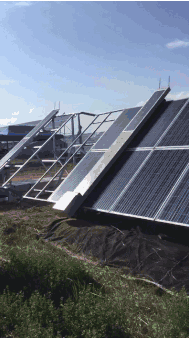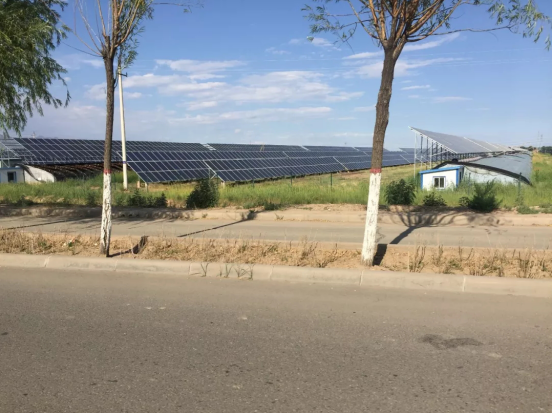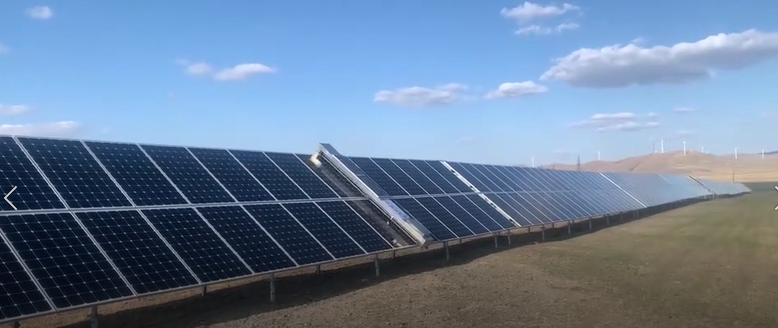The global new energy industry has experienced a boom period and is currently facing a transformation stage. As the world’s largest investor in clean energy, China is at the center of global energy transition, continuously reshaping the energy landscape with the world. Photovoltaic solar energy, as one of the most important renewable clean energy sources, has become a central force in the global energy transformation.
With the issuance of the “531 New Policy,” the domestic photovoltaic industry is facing challenges such as reduced government subsidies, increased costs of photovoltaic land use, and grid connection. Therefore, the concept of scientifically and reasonably cleaning photovoltaic components, as well as meticulous maintenance to enhance power generation and efficiency, has gained recognition in the industry.
Photovoltaic components, being exposed to the outdoors, easily accumulate dust, sand, and other dirt. If not cleaned in a timely manner, it not only affects power generation but also the lifespan of the photovoltaic plant. Therefore, maintaining the cleanliness of photovoltaic components is essential for extending the lifespan of the plant and increasing its power generation.

The cleaning and maintenance of photovoltaic power plants is imperative!
Recently, a mysterious guest arrived at a photovoltaic power plant in North China. With a unique appearance and robust build, this robot moves effortlessly outdoors. It operates with high efficiency; in just one minute, it accomplishes the same amount of cleaning work as an adult man would do in one hour. Unfazed by climatic or terrain pressures, it has won the favor of the plant’s staff.
This is the Todos G-Series centralized photovoltaic waterless cleaning robot.
This photovoltaic plant is a typical agricultural-photovoltaic complementary power station, fully utilizing renewable resources. However, due to its large area and complex terrain, traditional cleaning methods such as manual cleaning or cleaning vehicles have significant challenges. Additionally, the complex environment poses substantial safety risks for cleaning personnel. However, these challenges are not an issue for the G-Series centralized waterless cleaning robot!
Let’s learn more about this mysterious visitor! The G-Series centralized waterless cleaning robot is composed of a cleaning robot and a transport robot. Despite its large size, it is quite agile, capable of performing front-and-back, vertical, and long-distance cross-row cleaning on photovoltaic components, with a cleaning range of up to 1,000 meters, making it especially suitable for large distributed and centralized photovoltaic power plants.
The G-Series centralized waterless cleaning robot is built to withstand extreme temperatures, operating normally in environments ranging from -40°C to 70°C, adapting to the majority of climates and terrains across the country. This robot can clean without using water, which is particularly beneficial for plants located in water-scarce areas or with difficulties in water access!

In remote areas, charging robots can pose challenges, but the G-Series centralized waterless cleaning robot doesn’t face this issue. It can automatically draw power from the photovoltaic components, charging during the day and working at night without interrupting the plant’s power generation.
Intelligence is also one of the most distinctive features of the G-Series centralized waterless cleaning robot. It can be managed via the Todos photovoltaic waterless cleaning robot monitoring platform to set cleaning schedules automatically, requiring no manual operation—making it convenient, labor-saving, and worry-free.
Additionally, Todos has made technological breakthroughs by integrating internet and wireless technology into the Todos Intelligent Solar-Wind Cloud, enabling remote management of photovoltaic plants and making the operation and maintenance of photovoltaic plants more intelligent. After each cleaning operation, the Todos Intelligent Solar-Wind Cloud collects cleaning data, analyzes it based on historical records, and formulates cleaning plans for users, helping them optimize cleaning strategies, reduce maintenance costs, and enhance power generation.
In comparison to manual cleaning, the G-Series centralized waterless cleaning robot achieves decisive advantages in various aspects, with clear cost efficiencies, controllable cleaning outcomes, and transparent cleaning costs.

The Importance of Cleaning and Maintenance of Photovoltaic Components
Photovoltaic components are highly sensitive to temperature. The accumulation of dust and other dirt on the component surface increases thermal resistance, acting as an insulating layer that affects heat dissipation. Simultaneously, the obscured areas heat up faster, leading to the “hot spot effect,” where even a small hot spot occupying 1/60 of the component’s cell area can reduce the overall power generation by one-third and potentially decrease the lifespan of the photovoltaic module by at least 10%. In severe cases, it can permanently damage the solar battery module or even burn out components, causing irreparable losses.
Michael Bergin, a professor in civil and environmental engineering at Duke University, conducted a study in India that showed in arid regions like the Arabian Peninsula, cleaning photovoltaic components every month could counteract a 17% to 25% decrease in solar energy efficiency due to dust accumulation; cleaning every two months could lower efficiency by 25% to 35%. The research team estimated that air particulate matter in India might reduce power generation by 780 MW.
The photovoltaic industry has transitioned from a rapid land-grabbing phase to a more powerful intelligent photovoltaic age. The concept of intelligent PV operation is no longer just a slogan; it has become deeply integrated into the industry. Todos is leading the investment in the photovoltaic intelligent operation and maintenance market. The concept of intelligent operation and maintenance by Todos has already been recognized by industry customers, and the Todos photovoltaic waterless cleaning robot has gained wide popularity. The active presence of Todos’s photovoltaic waterless cleaning robots can be seen in photovoltaic plants across the country, from large to small.